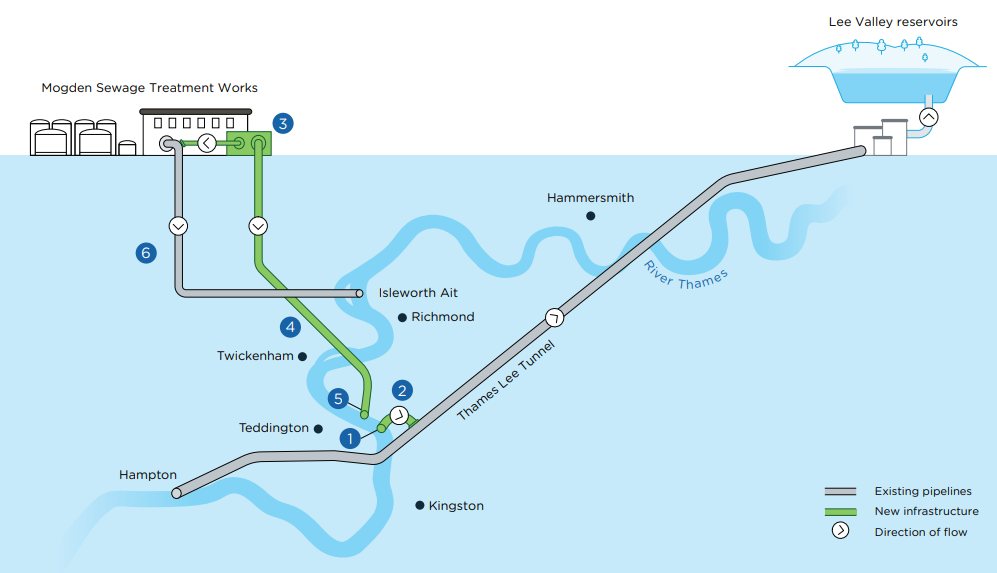Teddington Direct River Abstraction
We’re proposing a new river abstraction on the River Thames, supported by water recycling. This will help support London during periods of prolonged dry weather.
How the Teddington Direct River Abstraction (TDRA) works
We’d remove water from the river upstream of Teddington Weir via a new intake. It would travel along a new pipeline connecting to an existing underground tunnel. This would flow up to 75 million litres of water each day to our reservoirs to become drinking water.
Water would be replaced with recycled water from Mogden Sewage Treatment Works. It would transfer to the river along a new underground tunnel to an outfall structure. This would be upstream of Teddington Weir.
By doing this, we’d be able to access additional supplies of water while maintaining river levels. This ensures the river environment and ecology are protected.
When the project would be operational
We’d only do this during droughts, which we estimate will happen roughly every two years. This is usually between late summer and late autumn. As part of this, we’d reach an operating agreement with the Environment Agency that would set out when we can use it.
To keep the treatment facility in good working order and ready for when we need it most, we’d keep it in “standby mode”. This means we’d run a low volume of water through it outside drought periods. It would then release through our existing outfall at Isleworth Ait.

Map key
- New intake on the riverbank upstream of Teddington Weir. It would take up to 75 million litres of water per day from the River Thames during drought periods.
- A short connecting pipeline to be built underground to move water from the River Thames. It will move water to the existing Thames Lee Tunnel. This will help our Lee Valley reservoirs levels and provide more drinking water.
- New Tertiary Treatment Plant (TTP) at Mogden Sewage Treatment Works (STW). This would provide an additional cleaning process for up to 75 million litres per day of water.
- The recycled water would be transferred to the Thames via a new 4.2km-long tunnel.
- A new outfall structure would be built downstream of the new intake. It will discharge recycled water, maintaining river levels and protecting habitats and wildlife.
- Outside of drought periods, the TTP would operate in standby mode and run at a much lower capacity. We’d release the “maintenance flow” of recycled water produced in standby mode. It will be released into the tidal Thames via our existing outfall at Isleworth Ait.
Statutory consultation 2025
We held a statutory consultation on the TDRA project in summer 2025. Communities, customers, and stakeholders were invited to share their views on the project.
The consultation ran from 17 June 2025 to 26 August 2025. The feedback we've received is helping us to shape our proposals to keep water flowing for the future. For more information, please visit our project website.